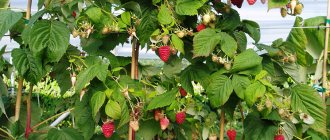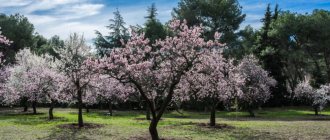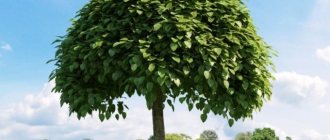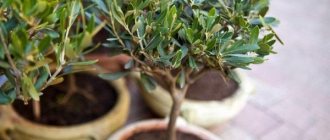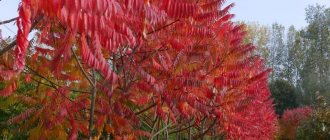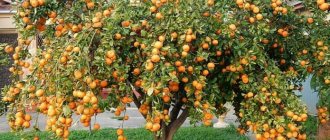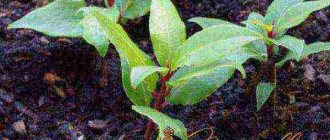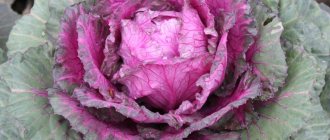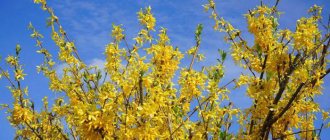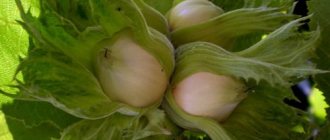The strawberry tree arbutus, or, as gardeners call it, strawberry, is a tree-like low plant grown for decorative purposes and for eating its fruits. Another popular name for arbutus is “shameless,” received because it annually sheds its bark. Strawberry fruits really look like wild strawberries, or rather Tibetan raspberries. Requirements for maintenance and care allow the cultivation of arbutus both as a home tub crop and for cultivation in the garden and on a personal plot in areas where climatic conditions allow this.
general description
The natural growth area is geographically extensive - the Mediterranean, Ireland, Central America, Western Europe and some other areas with a suitable climate and topography. The small-fruited strawberry is a native of Crimea, but is listed in the Red Book due to its small number. Prefers to settle on elevated areas and rocky slopes. Belongs to the Heather family, characterized by fairly high endurance to adverse natural factors.
In appearance, it is a small tree when grown in a greenhouse with very decorative bright drupe fruits, covered on the outside with small but well-defined growths. The pulp is edible, mealy, bright orange in color, tastes sweet and sour, vaguely reminiscent of garden strawberries. The berries do not have outstanding taste, but after a short storage they become sweeter. In the wild, the tree can grow up to 6-9 meters or more. It grows slowly and lends itself well to molding.
In 10 years, an arbutus specimen grows no more than 2 m, but is long-lived and by the age of 50 can reach 5 meters, provided there is sufficient space for the development of the root system. Its white flowers are similar to lily of the valley, but have a completely different aroma with a hint of tartness.
A strawberry tree can naturally bloom and ripen its berries at the same time.
Plant care
The strawberry tree is not capricious; even an inexperienced gardener can care for it. The basic principles of care are proper watering, timely fertilizing, and maintaining a dormant period in winter.
Optimal conditions for growing indoors
The comfortable temperature for growing strawberry trees at home is 25 degrees. The plant needs sufficient lighting, no drafts, and winter rest. The plant should be protected from direct sunlight so as not to cause leaf burns on the arbutus.
In the garden plot
In the garden plot, arbutus is grown in a bright place, sheltered from the winds. Partial shade is allowed. Any soil is suitable: sandy, loamy, rocky, but well drained.
Lighting
The plant needs sufficient lighting, but it can also grow in partial shade.
Top dressing
In summer and spring, strawberries are fed twice a month with organic or complex fertilizers. To accelerate growth, potassium and nitrogen-containing fertilizers are used. In winter, fertilizers are not applied.
Temperature
Comfortable temperature for arbutus is +25 degrees, in winter +10 degrees. The room in which the plant is located must be regularly ventilated.
Watering
The plant should be watered properly, but not very often; there is no need to additionally spray the strawberries. In winter, watering is limited.
Pruning branches
Sanitary pruning of the crown is carried out in order to remove non-viable, damaged branches.
Spreading
The strawberry tree grows in Western Europe and Western Asia, America, Abkhazia, Mexico, and on the Black Sea coast.
Growing in a winter garden
The strawberry tree loves warmth and can withstand frosts down to -15 degrees. At lower temperatures, the plant dies, so it is better to grow strawberry trees in winter gardens and greenhouses, keep them indoors in winter, and take them out into the fresh air in summer.
The soil
The soil in the garden is not chosen; strawberries are completely unpretentious in terms of soil: light, heavy, acidic, alkaline. When growing at home, use a universal mixture for indoor plants.
Rest period
In winter, arbutus urgently needs to be in a cool room, which prevents the appearance of nondescript elongated growth, which can grow at room temperature and lack of light. The number of waterings is reduced.
Winter hardiness
In terms of winter hardiness, arbutus belongs to climate zone 8, i.e. capable of wintering in open ground at temperatures not lower than -7...-12C. In colder regions, it either needs shelter for the winter, or is grown exclusively as a greenhouse or tub plant, which is taken outside only in the warm season.
Interesting fact. This tree is depicted in a sculptural composition in the city of Madrid along with a bear who feasts on its berries. The monument is immortalized on the coat of arms of this city and is its symbol.
Growing
The seeds of the strawberry tree are small and elliptical in shape. From them you can get a full-fledged tree. This can be done much less frequently from cuttings.
Strawberry trees at home are grown from seeds in more than one year. First, they are removed from the fruit, dried, and stored for a year or two. Then they are stratified for two months at a temperature of 21 to 24 degrees in a mixture of peat and sand. Sow the seeds at a depth of 0.7 cm, water and cover with glass. Shoots appear in two months or later. They are watered as needed, and when they grow older, they are planted in pots.
{SOURCE}
Types and varieties with photos
The plant does not have many varieties; it has been cultivated since the end of the 19th century.
Small-fruited Greek strawberry
Prefers to settle on dry limestone rocks. This species is distributed on the Black Sea coast (limited locations) and in Transcaucasia. Older specimens reach 5 m, and are occasionally taller. It is covered with smooth and thin bark, which begins to peel off at the beginning of summer, completely exposing the trunk. The young bark grows, changing color from green to yellow and finally to coral. The leaves of small-fruited strawberry have an elliptical shape, in adult specimens they reach 10 cm in length. The flowers and fruits are small, orange, usually not exceeding 1.5 cm in diameter.
On the territory of the Botanical Garden in Crimea, a unique specimen of small-fruited arbutus still grows, the age of which exceeds 500, and according to other studies, almost 1000 years.
Description of the strawberry tree plant: photo of fruits
The strawberry tree belongs to the genus of evergreen plants. All its species are characterized by slow growth, smooth, reddish or brown bark and arched branches.
This crop is a low, broad-leaved shrub or low-growing tree 3-5 m high. Certain types of strawberries can reach up to 12 m in height.
The tree trunk is orange or reddish. The bark changes annually and produces a characteristic rustling sound, for which the plant is nicknamed the “whisperer”. The leaves are alternate, leathery, entire, up to 8 cm long, dark green.
The flowers are white or yellowish, collected in erect and pendulous panicles, reminiscent of blueberry flowers. Blooms in May.
The fruits are multi-seeded, rounded drupes, covered with small growths. The pulp is mealy, sweet and sour. It is similar in taste, color and consistency to garden strawberries. The pulp contains small seeds. Arbutus berries are rich in vitamin C. When ripe and left for some time, the fruits of the strawberry tree have a sweet taste and pleasant aroma.
Strawberry trees are grown from seeds and cuttings.
Why does the strawberry shed its bark?
At first glance at the tree, it seems that there is no bark on its trunks at all; in fact, it is there, but in an unfinished form. The upper cortical rough layer remains unformed in it. The annual renewal of the bark is a compensation for the function of photosynthesis. Like many other evergreen trees, arbutus experiences a period of so-called partial leaf fall, which usually occurs at the peak of hot summer. To save moisture, the plant reduces the evaporating surface and sheds the bark, which, when dying, no longer draws out vital juices, but partially covers the trunk from the sun. The young bark is green because it performs the function of photosynthesis at this stage.
Optimal conditions for home and garden breeding
The requirements of a home earthen tree are usual - it needs a room temperature of about +25C, enough diffused light (direct sun is undesirable), moderate watering and winter dormancy. It should also be noted that it does not tolerate drafts well. In the garden, a semi-shaded place without close water and protected from the winds is suitable for him.
Diseases and pests
The crop is highly resistant to pests. In some cases, however, spider mite damage is possible, which should be combated in the usual way using insecticides. It cannot cause any particular harm to the viability of an adult tree, but it greatly slows down its further growth. The most common disease is fungal rot, which is caused by excessive watering or waterlogged soil.
Planting and propagation of strawberries
It is definitely easier and more reliable to buy a ready-made seedling due to the complexity of propagating the crop, but, in principle, the seed method and rooting of apical cuttings are available. The plant is not taken from cuttings in the usual way.
Growing from seeds
The problem with the method is the extreme germination rate of the seeds, although it is officially estimated at 70%. In addition, they require proper stratification for 3 months. Seeds are collected in the second half of autumn. The ripe fruit is slightly dried and the seeds are removed, which are then placed in a container in a cold place with a temperature of +5C. They need to be kept in a moist substrate. After at least 3 months, the seed material is placed in warm water for a week, after which it is buried in the soil to a depth of 1 cm. Greenhouse conditions are created for the container, covered with film, plastic or glass, where they should germinate for about 2 months. After germination, the container is opened (and before that, it is periodically ventilated). Seedlings need to be picked when they grow to 5 cm and have 8 leaves.
Important! It is very advisable to add soil where a strawberry tree had previously grown to the prepared substrate for planting, to ensure mycorrhiza (the presence of the necessary fungal hyphae).
Apical cuttings
Cuttings are taken at the end of August and then kept warm in a moist soil environment. The survival rate of cuttings is extremely low, so the material must be cut in excess. This method, like the seed method, does not guarantee success. Planting in a permanent place is carried out in the spring with the onset of stable warmth.
Strawberry transplant
Due to the extreme fragility of the root system, transplantation is difficult for adult specimens. The process is carried out by transshipment with minimal trauma to the roots. The best time for this is spring, before new roots begin to form. At a young age, this will have to be done every 2 years, at a more mature age - as you grow.
Contraindications for use
The berries of the strawberry tree are eaten when ripe, when they acquire a deep red color, in moderate quantities - about a glass.
- A large number of ripe berries containing alcohol have an intoxicating effect.
- Green berries contain a toxin that causes dizziness and abdominal pain.
- It is not recommended to include it in the diet during pregnancy and breastfeeding.
- Do not give to children.
- Do not use if you have allergies or individual intolerances.
- Perennial bark should be used exclusively for external use.
Pharmacological properties of arbutus and its use in folk medicine
The composition of the plant has been studied relatively little, but the content of polyphenols, tannins, a number of organic acids, as well as rhodotoxin glycoside is known. Overripe berries contain up to 0.5% alcohol. Traditional healers and homeopaths use all parts of the plant, using them to treat skin diseases that are accompanied by itching and purulent rashes, pathologies of the genitourinary system and gastrointestinal tract. The raw materials are collected in the summer, then they are dried and stored in a breathable container for no more than 2 years. With the help of decoctions and tinctures, ENT diseases and burns are treated, and the extract is used as an antispasmodic and to treat inflammation of the bladder, accompanied by increased urination.
Important! Eating berries in large quantities can cause digestive problems and headaches.
Benefits and Applications
Almost all parts of the plant are used by humans.
- Furniture, watch cases, and boxes are made from the bark. The wood is strong and heavy and does not rot.
- The flowers are used as a diaphoretic.
- Extract from the bark is actively used for tanning leather. Previously, it was used to dye wool for tapestries.
- The roots and leaves are used to treat the genitourinary system.
The medicinal properties of the plant have been known since the 14th century. At that time, an extract from flowers and leaves was used as a remedy against the plague and an antidote.
The strawberry tree is considered an excellent honey plant. However, honey has a bitter taste.
The berries are used to make desserts and alcohol. They are stored dried and frozen.
The shelf life is a couple of years.
Due to its undemanding conditions, artubus is often planted in park areas and gardens.
